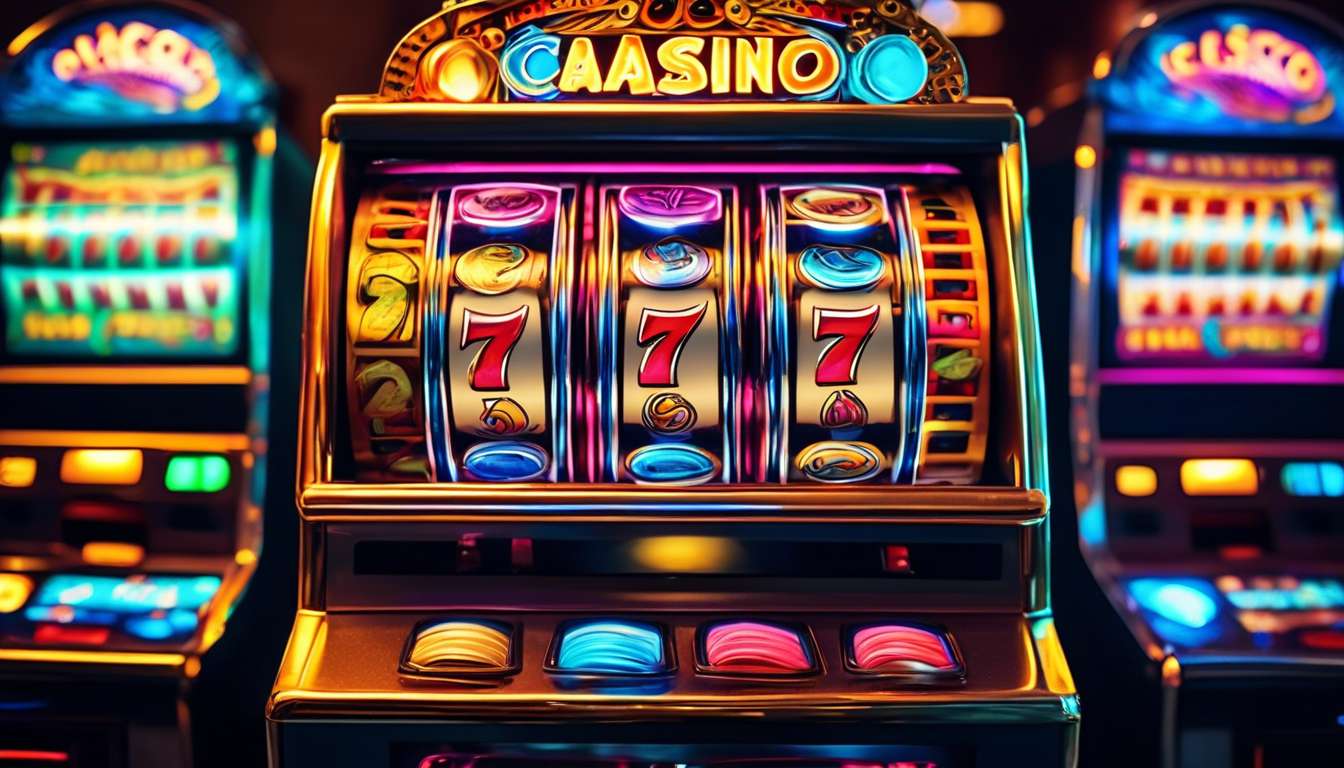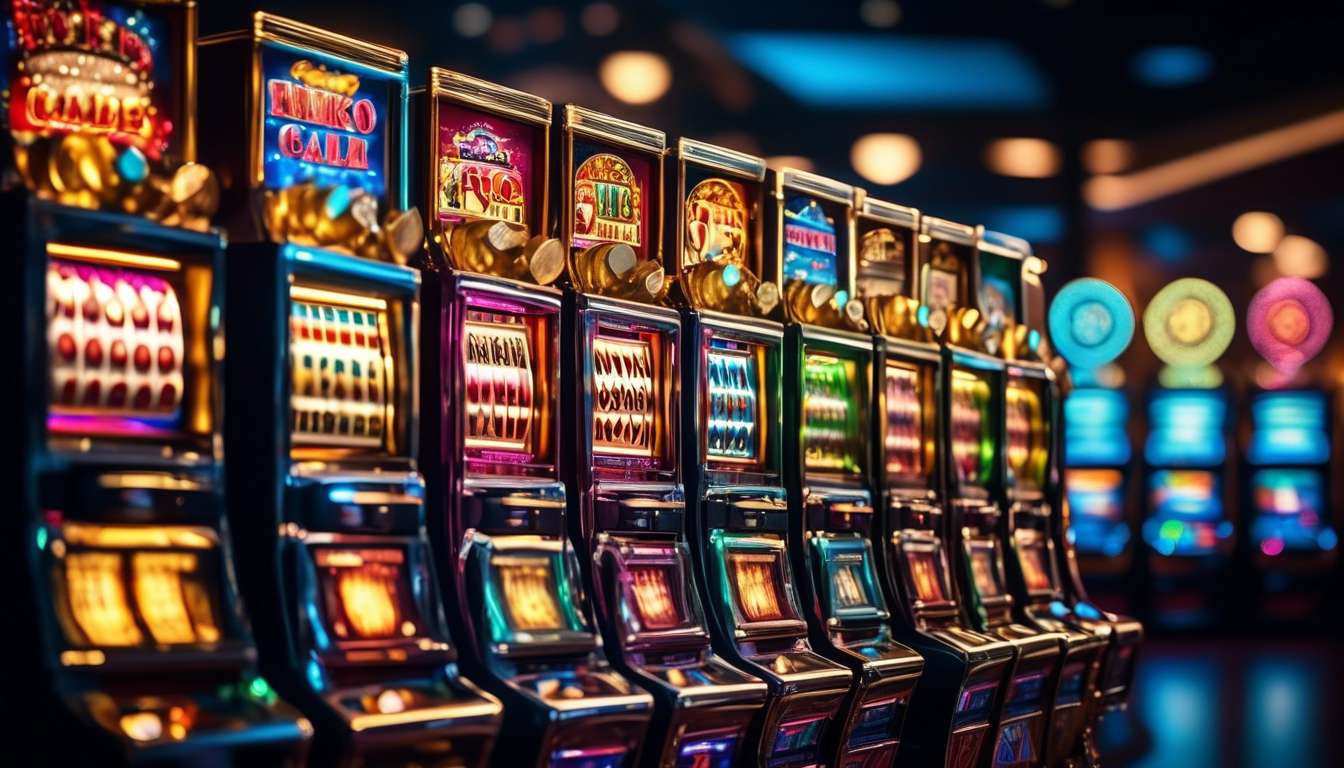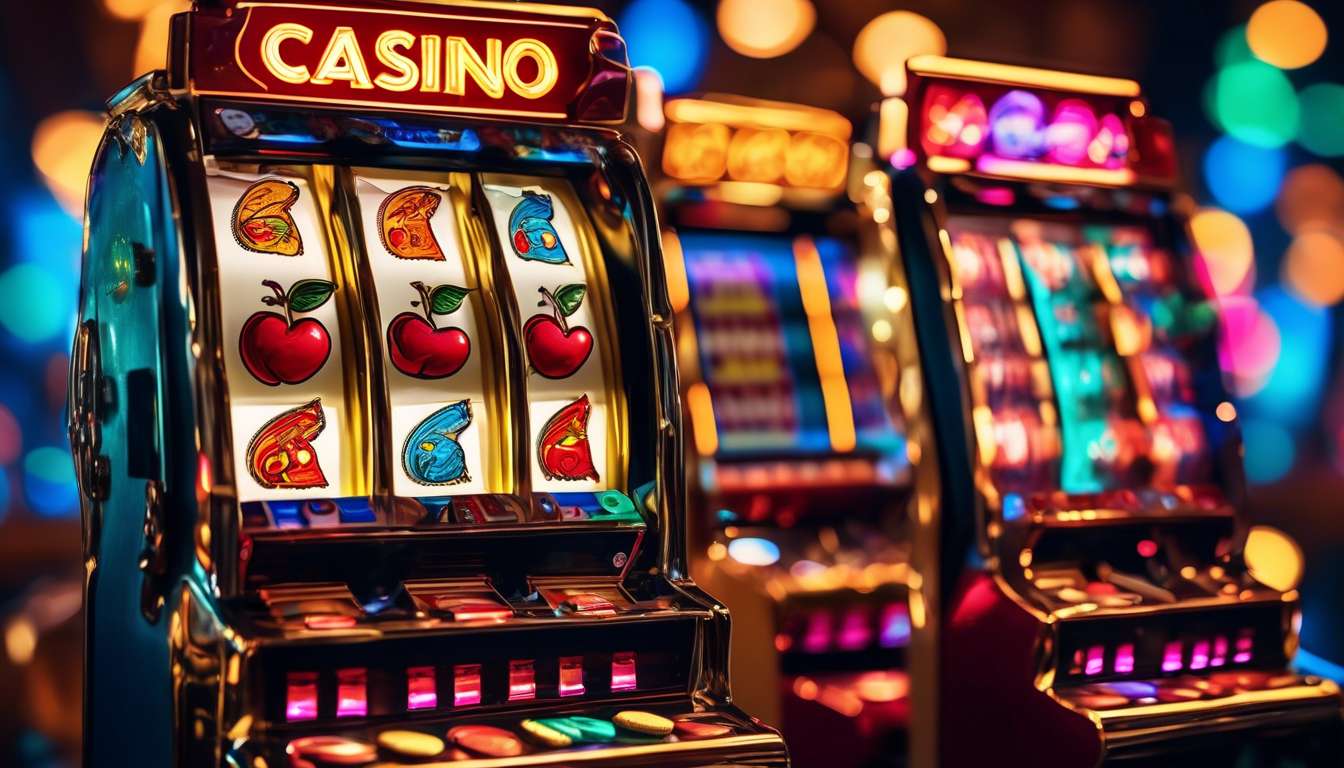We are fascinated by the intricate ways in which psychology is interwoven into the design of slot machines. These seemingly simple games are, in fact, products of sophisticated psychological strategies that captivate and compel us to keep playing.
In this article, we delve into five key psychological tricks that designers use to make slots irresistibly engaging:
-
Bright Colors and Enticing Sounds
- Designers use vivid colors and catchy sounds to grab attention and create an exciting atmosphere.
-
Strategic Placement of Near-Misses
- Slot machines often display near-misses to give players the illusion of almost winning, encouraging them to continue playing.
-
Variable Reward Schedules
- Unlike predictable rewards, variable schedules keep players engaged by providing rewards at random intervals.
-
Cognitive Bias Exploitation
- Slot machines are designed to exploit cognitive biases, such as the gambler’s fallacy and illusion of control.
-
Emotional Triggers
- Emotional triggers are used to create a connection with players, making the gaming experience more personal and engaging.
By understanding these techniques, we can gain insight into why we find ourselves drawn to the spinning reels and flashing lights. This knowledge can help us navigate the gaming floor with a more informed perspective.
Join us as we explore the psychological underpinnings that make slot machines a perpetual allure.
Impact of Visual Stimuli
Vivid Colors and Dynamic Animations
Vivid colors and dynamic animations in slot machines capture our attention and trigger emotional responses. We find ourselves drawn into the immersive world of slots, where visual stimuli play a crucial role. The bright lights and captivating graphics aren’t just for show; they’re designed to activate our brain’s reward system.
Activation of the Brain’s Reward System
This system releases dopamine, making us feel good and encouraging us to continue playing. It’s a shared experience, creating a sense of unity among players as we all respond to these stimuli.
Near-Miss Illusion
We also encounter the near-miss illusion, where symbols almost align to win but just miss. This visual trick enhances the sense of anticipation and keeps us engaged. It taps into our desire to belong to the group of winners, compelling us to try again.
Understanding Slot Design Influence
By understanding these psychological techniques, we can better appreciate how slot design influences our behavior, drawing us into a collective gaming experience that feels both exciting and inclusive.
Near-Miss Illusion Strategy
In slot design, the near-miss illusion cleverly exploits our brains’ tendency to perceive almost-wins as motivation to keep playing. We’ve all felt that thrill when the reels show two jackpot symbols, and the third just barely misses the line. This near-miss taps into our reward system, making us feel like victory is within reach. It’s a powerful psychological trick that keeps us engaged and hopeful, urging us to try just one more time.
Slot machines use visual stimuli to enhance this effect, ensuring those near-miss moments are as tantalizing as possible. They employ:
- Bright colors
- Flashing lights
- Engaging sounds
These elements create an immersive experience, drawing us into a community of players hoping for that next big win. We share in this collective excitement, driven by the same near-miss illusion that feeds our desire to belong to that group of lucky winners.
By understanding this strategy, we can recognize the near-miss effect and maintain control over our gaming experiences.
Reward System Dynamics
Our brains’ reward systems are intricately designed to respond to the stimuli that slot machines present, making gaming experiences incredibly engaging and sometimes difficult to resist.
We find ourselves drawn to the vibrant visual stimuli, flashing lights, and captivating sounds. These elements create a sensory-rich environment that taps directly into our reward system, triggering the release of dopamine—a chemical messenger that makes us feel pleasure and reinforces the behavior.
The near-miss illusion plays a pivotal role in this dynamic. When we almost win, our brains perceive it as a partial victory, which unexpectedly heightens our desire to keep playing. This illusion triggers the same neural pathways as a win, tricking our reward system into thinking that we’re close to a big payoff.
By understanding this, we can see how slot machines craft a sense of belonging in their community of players. We are all chasing those elusive wins together, driven by the same psychological mechanisms. We’re part of a shared experience, rooted in the intricate dance between visual stimuli and our brain’s reward system.
Cognitive Biases Explored
In slot design, cognitive biases such as the gambler’s fallacy and illusion of control have a significant impact on players’ decisions, often encouraging prolonged play.
- The gambler’s fallacy leads us to believe that a win is inevitable after a series of losses.
- The illusion of control gives us the false impression that our actions can influence the outcome.
These biases create a sense of connection to the game, instilling a feeling of control and hope.
The near-miss illusion also contributes to player engagement. Almost winning activates the brain’s reward system similarly to an actual win, tricking us into believing that success is just within reach and motivating us to try again.
Visual stimuli play a crucial role in enhancing the gaming experience:
- Bright colors, flashing lights, and engaging graphics are not just visually appealing; they also amplify the excitement and anticipation of play.
- Sound effects complement these visuals, tapping into our senses and creating an immersive environment.
This combination makes players feel part of something larger, drawn into the communal thrill of chance, where every spin holds the promise of potential victory.
Emotional Engagement Techniques
Slot designers cleverly use emotional engagement techniques to deepen our connection to the game and keep us coming back for more.
We’re drawn in by visual stimuli, such as:
- Vibrant colors
- Flashing lights
These elements create a sense of excitement and anticipation, making us feel like we’re part of something bigger—a community of players sharing in the thrill.
The near-miss illusion is another powerful tool, giving us the impression that we were so close to hitting the jackpot. This almost-win scenario taps into our innate desire for achievement, urging us to try just one more time.
The reward system in slot design is meticulously crafted to trigger positive emotions. Small, frequent wins may not make us rich, but they:
- Boost our mood
- Reinforce our engagement
We feel a sense of belonging when the game acknowledges us with rewards, no matter how minor.
Together, these emotional tactics create an immersive experience, ensuring we remain emotionally invested.
Sound Effects Influence
Sound effects play a crucial role in shaping our experience, enhancing both excitement and immersion in slot games. As we spin the reels, the jingles and chimes trigger our brain’s reward system, making us feel like part of a thrilling, shared journey. We’re not just watching symbols line up; we’re enveloped in a sensory experience that combines audio with visual stimuli, drawing us deeper into the game.
The strategic use of sound effects doesn’t stop at just making us feel good. When we experience a near-miss illusion—where symbols almost align for a win—the accompanying sounds amplify the anticipation and keep us engaged. It’s as if we’re on the brink of hitting the jackpot, and those sounds urge us to try just one more spin.
In our quest for belonging within the game’s universe, these carefully crafted sounds keep us hopeful and connected, reinforcing the cycle of play and anticipation that’s central to the slot experience.
Behavioral Conditioning Methods
Slot game designers skillfully utilize behavioral conditioning techniques to keep us playing and returning for more. They create a sense of community and excitement by tapping into our natural desires for rewards and shared experiences.
Key elements they use include:
-
Visual Stimuli: Bright, colorful graphics and flashing lights catch our attention and trigger our brain’s reward system, making each spin feel like a potential win.
-
Near-Miss Illusion: When we almost hit the jackpot, it feels like we’re on the brink of success, encouraging us to keep trying. This illusion taps into our hope and optimism.
These elements foster a sense of camaraderie with fellow players who share the same thrill of anticipation. By making us feel like we’re part of something bigger, these games cleverly exploit our desire for belonging and achievement.
Ultimately, these methods ensure we’re drawn back into the game, eager to chase that elusive big win together.
Player Interaction Psychology
In player interaction psychology, we explore how slot games engage us through social elements and personalized experiences.
Social Elements:
- Slot designers know we crave connection and a sense of community.
- They incorporate features like leaderboards or social sharing options, allowing us to feel part of something bigger.
- When we see our friends or fellow players reaching milestones, it motivates us to keep spinning, fostering a communal gaming atmosphere.
Visual Stimuli:
- Bright colors, flashing lights, and dynamic animations captivate us, making each play session exciting and immersive.
- These elements, combined with the near-miss illusion, create the perception that we’re always on the verge of winning.
- This illusion ignites hope and encourages continued play.
Reward System:
- The system hooks us into an intricate reward mechanism designed to reinforce our engagement.
- By offering personalized bonuses or frequent small wins, the system ensures we feel acknowledged and valued.
- This enhances our desire to return and try our luck repeatedly.
Overall, these strategies create a compelling and immersive experience that drives player engagement and fosters a sense of belonging and excitement.
What are some common misconceptions about slot machine addiction and how can they be addressed?
When it comes to addressing misconceptions about slot machine addiction, it’s crucial to debunk the idea that it’s solely a matter of personal weakness.
By understanding the psychological aspects involved, we can see that addiction is complex and often tied to factors beyond an individual’s control.
Empathy and education are key in helping others grasp the realities of this issue. Offering support rather than judgment can make a significant difference.
Key Points to Consider:
- Slot machine addiction is not merely a personal failing.
- Psychological factors play a significant role in addiction.
- Empathy and education help in understanding the issue.
- Supportive approaches are more effective than judgmental ones.
How do slot machine designers ensure their games comply with legal and ethical standards?
We ensure compliance with legal and ethical standards by conducting thorough research, collaborating with regulatory authorities, and implementing strict guidelines.
Our team prioritizes:
- Transparency
- Fairness
- Responsible gaming practices
These principles are applied in all aspects of slot design.
By staying informed about industry regulations and engaging in ongoing training, we uphold the highest standards of integrity and ethics.
Our commitment to player safety and well-being drives our dedication to creating games that meet legal and ethical requirements.
What role do cultural differences play in the design of slot machines across various markets?
Cultural differences significantly impact slot machine design in diverse markets.
We tailor games to resonate with the values, preferences, and aesthetics of each culture. By incorporating familiar symbols, themes, and colors, we create an immersive experience that feels personal and engaging to players from different backgrounds.
This approach ensures that our games resonate deeply with players, fostering a sense of connection and enjoyment across various markets.
Conclusion
In conclusion, slot design incorporates various psychology tricks to captivate players and enhance their gaming experience.
Key strategies include:
-
Visual Stimuli: Bright colors and flashing lights are used to grab players’ attention and create a stimulating environment.
-
Sound Effects: Engaging audio, such as jingles and winning sounds, enhance excitement and encourage prolonged play.
-
Player Interaction: Interactive elements and feedback keep players engaged and invested in the game.
These strategies are carefully crafted to keep players engaged and coming back for more.
Understanding the psychological aspects behind slot machine design can shed light on the powerful impact these subtle techniques have on our behavior and enjoyment of the game.




